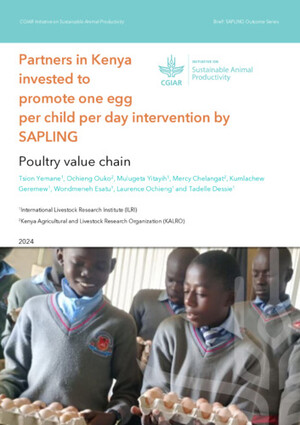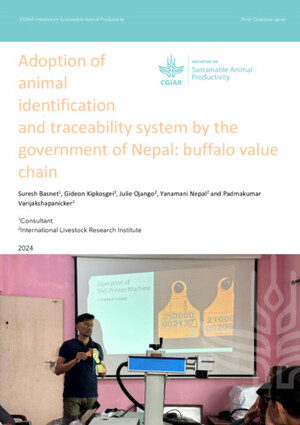
Understanding the food safety and zoonosis risk practices of the beef, sheep and goat Nairobi food systems using value chain analysis
Abstract
Purpose
Beef, sheep and goat food systems are thought to be important sources of pathogens in Nairobi. This study aimed to use value chain (VC) analysis to investigate food safety and zoonotic risk practices of these systems.
Methods
VC analysis is commonly used to assess market structures yet its potential to investigate food safety and zoonotic risks is unexplored. In a cross-sectional study of people in Nairobi’s beef, sheep and goat food systems (farmers to consumers), data were collected through 75 focus groups and 571 interviews. Data were obtained on movement of people, animals and products (chain mapping), power groups, rules, incentives and enforcement (governance), barriers, distribution of benefits and food safety and zoonoses risk practices. Data were analysed to produce chain profiles and quantify commodity flows and gross margins. Qualitative analysis identified food safety, zoonosis and VC themes.
Results
Eight chain profiles were identified, with the ‘less integrated terminal markets’ representing three quarters of the city’s ruminant meat supply. Main food safety and zoonotic risk practices related to: water and equipment contamination; poor cold chain; human contact contamination; animal movements; and lack of hygiene. Poor governance enhanced these risks such as: inadequate market business models; enforcement failures; control gaps; and power group pressures. Barriers identified to corrective actions were: lack of infrastructure; limited financial capacity; poor training and services. Furthermore, unequal distribution of benefits in low cost markets provided a negative incentive for the perpetuation of risks.
Conclusions
This study identified main food safety and zoonoses risk practices, people and VC factors involved in risk-taking activities to help future control programmes in the Nairobi beef, sheep and goat system.
Relevance
Food safety risks and diseases can be effectively controlled and understood when these are investigated using a food system approach which considers chain governance, barriers and inequalities. The methods used provide a clear guideline and way forward for epidemiologists to investigate these risks using a VC approach.
Citation
Alarcon, P., Muinde, P., Karani, M., Akoko, J., Fèvre, E.M., Dominguez-Salas, P., Kiambi, S., Häsler, B. and Rushton, J. 2015. Understanding the food safety and zoonosis risk practices of the beef, sheep and goat Nairobi food systems using value chain analysis. Presentation at the 14th conference of the International Society for Veterinary Epidemiology and Economics (ISVEE), Merida, Yucatan, Mexico, 3-7 November 2015.









